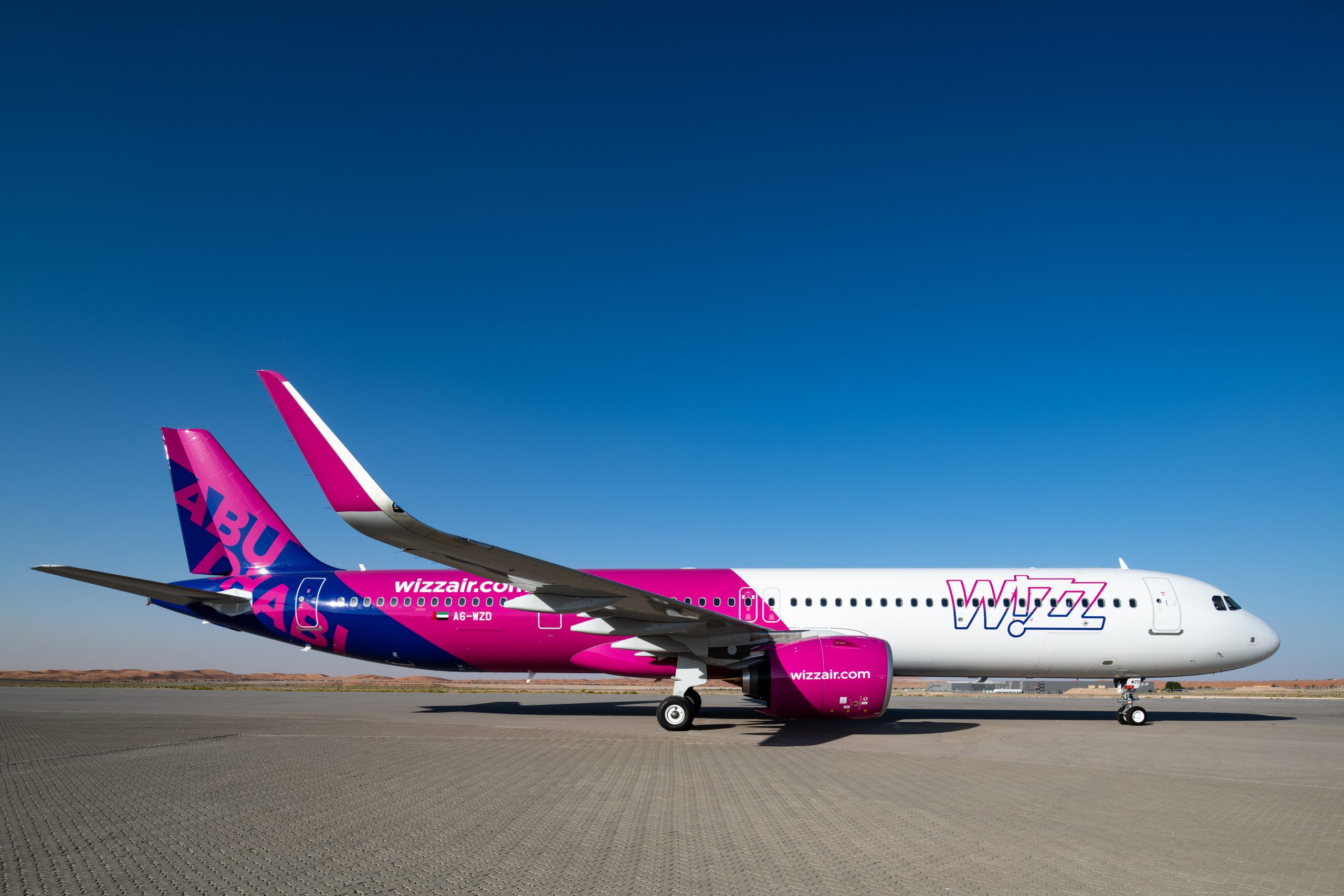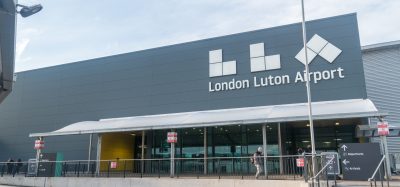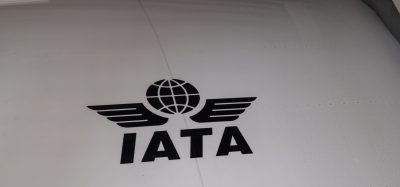The world’s most environmentally friendly airline, Wizz Air, talks SAF
- Like
- Digg
- Del
- Tumblr
- VKontakte
- Buffer
- Love This
- Odnoklassniki
- Meneame
- Blogger
- Amazon
- Yahoo Mail
- Gmail
- AOL
- Newsvine
- HackerNews
- Evernote
- MySpace
- Mail.ru
- Viadeo
- Line
- Comments
- Yummly
- SMS
- Viber
- Telegram
- Subscribe
- Skype
- Facebook Messenger
- Kakao
- LiveJournal
- Yammer
- Edgar
- Fintel
- Mix
- Instapaper
- Copy Link
Posted: 9 July 2024 | Holly Miles, Yvonne Moynihan | No comments yet
For Issue 2 2024, Yvonne Moynihan, Chief Corporate and Environmental, Social and Governance (ESG) Officer at Wizz Air Group, answers some questions about their plans for sustainable aviation fuel (SAF), including their collaboration with UK-based Firefly Green Fuels who have developed a novel pathway to SAF.
Wizz Air is Europe’s fastest growing, but also the most environmentally sustainable airline globally. That’s quite a big statement! Can you please tell us what makes you say this?
That’s based on the fact that, for two years in a row, we have been recognised by CAPA, the Centre for Aviation. It’s an independent third-party organisation, which has awarded us the title of the world’s most environmentally sustainable airline, based on airlines’ carbon disclosures. We’ve been able to reduce our emissions intensity year-over-year by a significant amount.
For example, last year we reduced it by 6.8%. The current result that we have for the calendar year 2023 is 51.5 grams of CO2 per passenger per kilometre, which is the lowest in the industry. And if we look at the number two and number three globally in terms of results of emissions intensity by CAPA, that’s IndiGo in India and Pegasus. What’s interesting is that the common denominator is that all of the top three airlines are low-cost airlines and fly the aircraft model, Airbus A321neo. So, the A321neo is significant in that respect.
We have invested in fleet renewal, so we’re converting our A320ceos to A321neos. We’ve invested in brand new aircraft, with the best technology and the lowest fuel consumption and noise on the market.


Copyright: Wizz Air
Caption: Wizz Air A321neo which reportedly offers nearly 50% reduction in noise footprint, 20% reduction in fuel consumption and 50% reduction in nitrogen oxide emissions compared with previous generation aircraft. It can also fly with up to 50% SAF blend.
What has the story with sustainable aviation fuel and Wizz Air been so far?
We are really starting on our journey to sustainable aviation fuel. The first pillar of our strategy was fleet renewal and now we’re embarking on the second pillar, which is sustainable aviation fuel. The third pillar will be hydrogen and improvements in air traffic management. Looking at SAF, we view it as the most important pillar in the medium-term because we can have a significant reduction in our emissions if we start mainstreaming SAF into our operations.
There are numerous reports advocating for emission reductions, achievable with SAF. IATA has a report which estimates 65% of emissions reductions for the aviation industry will be because of sustainable aviation fuel usage and that has been a huge driver for us as well.
However, we see there are limitations with SAF regarding cost and availability and our strategy has centred on that scarcity. Therefore, we have taken a portfolio approach to SAF, and we have mandates starting next year. We need to comply with the mandates, so we have agreements with fuel suppliers such as CEPSA, Neste and OMV in Austria. That is the start of the portfolio and then we questioned, ‘how are we going to position ourselves against the supply and demand and future potential challenges in accessing SAF?’ That’s why we took an innovative approach in looking at putting equity into sustainable aviation fuel development.
We have engaged in venture capitalism and we now have two equity investments, one with a company called CleanJoule in the U.S., and one with Firefly, which is a UK company which is converting sewage sludge to sustainable aviation fuel, so we’re very excited about that investment.
Another strand to our SAF story is that we are engaging in advocacy because, from a regulatory perspective, the landscape is changing and isn’t fully developed yet. We try to shape the regulatory environment by calling on policymakers to look at different incentives. We support the ReFuelEU legislation and hope to see similar, ambitious legislation and policy incentives established in the UK as well.
Last year, 90% of the world’s SAF went through the U.S. and they produced roughly 16 million gallons of it. We have good relationships with some American partners because our main investor, Indigo Partners, is based in the U.S. We speak to other airlines and understand they have regular operations and several offtake agreements in the U.S. compared to the EU, so we’re a little behind. I think that’s because there’s so much production in the U.S. as compared to the EU, at the moment. Currently in the EU, we’re only capable of producing 0.24 million tonnes of SAF, even though we need around three million tonnes by 2030.
What is Wiz Air’s involvement with the Firefly SAF project that you mentioned?
The investment in Firefly is two-fold. We have an equity share in the company and presently, we’re supporting the research and development phase. Firefly is bringing a new, technological pathway to converting SAF. Right now, we have HEFA, gasification, and power-to-liquids. Those are the pathways that people are familiar with, but this will be a new pathway called hydrothermal liquefaction, which will need to go through a certification process. We’re supporting Firefly on that side now. In addition to that, we have agreed an offtake agreement spanning 15 years for the supply of 525,000 tonnes of SAF over this period.
SAF is currently very much more expensive than Jet Fuel. Have you been given any assurances as to the price that they’re going to be selling it to you, so that you don’t have to pass on this price to your travellers?
We’re excited about it because the feedstock is low-cost, very abundant and it’s biogenic, so there’s no competition with food.
The cost of production is also quite low compared to other feedstocks. As a low-cost airline business we’re very cost-driven, so the merging of low-cost feedstock and low-cost operations is something that is logical to us.
In terms of the cost, this is why we have put equity into SAF because we can better control and strategically place ourselves in front of the evolving dynamics of market supply and demand. I won’t talk about the commercial terms of the agreement, but there will be a ceiling. Of course, there is no clear pricing in the future, but we have mechanisms for certainty which will be involved. Because of that, we’re hoping that the ramp up in SAF production will ultimately lead to lower cost of production.
Even though the cost won’t be on par with the cost of Jet A-1 fuel, it will be close to it and there will be certain incentives where we can offset or mitigate SAF usage. There will be some carbon cost savings that we can achieve from the use of SAF, as well as allowances obtained through legislation.
With that in mind, our aim is not to pass the cost on to the customer. That’s not part of our business model; our business model is low fares, so we will try to avoid the cost being passed onto customers, as much as possible. They are price sensitive so it is very noticeable when the prices are too significant – our customers will go elsewhere. That’s why we keep them low.
What are Wizz Air’s ambitions around SAF in general?
To mainstream SAF would be the ambition. We also announced, on 11 April 2024, the aspiration to use 10% SAF in our operations by 2030. The EU mandates provide that we would need to use 6% SAF by 2030 regardless. There will be a further ramp up required to meet other milestones in the future and to get to net zero eventually.
SAF is the holy grail of decarbonisation and for aviation, it’s the easiest solution in the short-term because it’s a drop-in fuel, there’s not a huge amount of infrastructure change needed. What’s needed is the production of it and we’re very confident of this, due to the different industry collaborations that are ongoing and the work of various organisations, for example The Jet Zero Council in the UK and the renewable fuels alliance within the EU. From those organisations there are pipelines of ongoing projects and incentives to invest in, and scale up, SAF production. We’re confident that by 2030, the conversation will very much be that SAF is part of normal operations.
Do you think SAF is the silver bullet to decarbonising the aviation industry?
Yes. Brown gold we call it!
What are the barriers for airlines in the use of SAF?
Primarily it’s cost and availability. It doesn’t make sense for a low-cost airline to start using SAF right now, because we don’t have an incentive to offset the cost and we don’t have the SAF allowances available from RefuelEU or from the UK Emissions Trading Scheme (ETS) regulation, available to us now. Therefore, it wouldn’t make sense to increase our cost. However, once the mandates come into play and legislation becomes effective, then it makes sense to start using SAF.
The other problem is availability. We are primarily based in central and eastern Europe where there is little to no SAF production on a local basis. Any of the SAF available for 2025 will be trucked in, likely from Scandinavia, so there’s that scarcity to deal with.
There are only a couple of airports right now which have SAF available for uplifting: Schiphol in the Netherlands and Heathrow in the UK. Those are both primary airports. We don’t fly predominantly to primary airports, we focus on secondary airports. Therefore, accessibility and availability of SAF is a barrier in the short-term, but there will be some flexibility provided for a transition period in terms of claiming SAF elsewhere. We would need more regulatory clarity on how a book and claim type of system could be incorporated into the regulatory framework because for airlines like us, sometimes in the periphery of the EU, we won’t have the ability to uplift SAF at airports regularly.
SAF is only one part of your wider sustainability strategy, can you talk about the other two other pillars?
Hydrogen is the long-term solution, and the biggest achievements in the reduction of CO2 will come from hydrogen. The problem with hydrogen is that it’s very far away. We have an ongoing project, the ZEROe project with Airbus, where we are ecosystem mapping our aircraft with potential hydrogen solutions to see what a Wizz Air hydrogen-powered aircraft would look like. But production of such aircraft isn’t foreseeable until 2040 at least.
With hydrogen, you also have to invest in storage infrastructure. These are all questions that need to be answered. And the regulatory landscape hasn’t been developed either. Then we have to worry about the industrialisation of this as well. That’s very much the long-term strategy, but we already want to be ahead of it which is why we’re involved in that project.
We’re also involved in an alliance called the AZEA, which is the Alliance for Zero Emission Aircraft, which brings all players of the ecosystem together to try to kick-start the hydrogen industry.
In terms of air traffic management, there was a recent agreement on the Single European Skies Legislation, however the result was not what airlines had lobbied for. Essentially the airspace and the management of the airspace will remain fragmented and not harmonised. There will be improvements in collaboration and some savings in terms of C02 reduction, as well as improvements to air traffic management.
The industry is saying that 10% improvement can be made, however, more could have been made if a different agreement was concluded. If we can get the 10% reduction overall in the airspace, that would be pretty significant. But there are ongoing projects again for the improvement of air traffic management, and if we can fly more efficient routes and use more efficient fuel practices as well, then we will significantly reduce carbon emissions.
The demand for flying is still there. It’s not about stopping air travel, but rather making improvements to sustainability and making the industry more responsible.


Yvonne has a barrister background and has practiced as a litigator in the Irish Courts, holding roles as a researcher for the Irish Superior Courts and the European Court of Justice. She has been working in aviation for more than 10 years, having held legal roles in Ryanair and Vueling, where she held positions of General Counsel and Board Secretary.
Issue
Related topics
Air traffic control/management (ATC/ATM), Aircraft, Airlines, Sustainable Aviation Fuel (SAF)


















